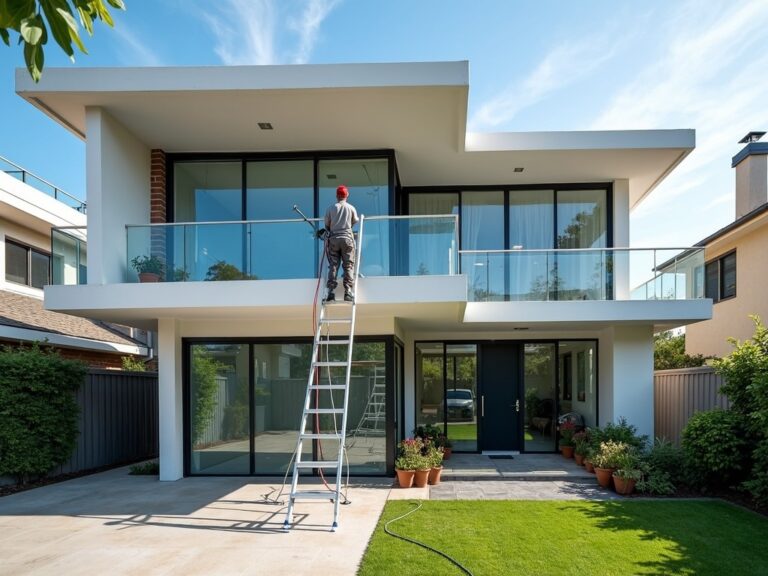Donec efficitur, ligula ut lacinia
viverra, lorem lacus.

Matching Home Extensions with Existing Architecture
A well-executed extension should look like it was always part of the original design, not an afterthought. But here’s the big question: how do you create a seamless blend between old and new?
Why Consistency Matters
Matching an extension with your home’s existing architecture goes beyond aesthetics. Consistency in design influences your home’s overall feel, value, and functionality. It ensures that the extension feels like a natural part of your living space, enhancing your lifestyle and potentially boosting your property’s value.
Mismatched additions can feel awkward and disrupt the flow of your home. Meanwhile, it’s just as important to take the condition of the existing structure into account. Even the most thoughtfully designed extension can look out of place if the rest of the house looks neglected. For example, if your roof appears discoloured or aged, a quick search for “roof cleaning services near me” can lead you to professionals who can restore its appearance and help it blend better with the new design. Similarly, a fresh exterior repaint can tie the entire facade together and give both old and new areas a cohesive, polished look.
Coming back, whether you live in a Victorian terrace, a mid-century modern home, or a classic federation-style property, here are a few elements professionals consider when blending new additions with existing designs.
Getting the Proportions Right
The proportions of an extension play a crucial role in harmonising it with the main house. Size, shape, and placement all matter here. You don’t want the addition to overpower the original structure, nor should it feel undersized or disconnected. An experienced architect or builder will carefully study the dimensions of your home and design the extension to complement its scale. For instance, a modestly sized single-storey house might suit a low-profile extension with similar height, while a two-storey home could support larger or more prominent home extensions Newcastle. Proportion is key, and professionals take this into account to ensure the extension feels balanced with the original structure.
Matching Materials and Textures
Materials and textures are among the first things people notice about a building. Whether it’s brick, stone, timber, or render, the choice of materials greatly affects the look and feel of an extension. When selecting materials for an addition, professionals focus on either matching or thoughtfully contrasting with the existing structure.
- Matching Materials – Using the same materials as the original structure can create a smooth, cohesive look. If your house features red brick, for instance, extending with matching brickwork can make the addition blend in seamlessly.
- Contrasting Materials – In some cases, a contrast can work well, as long as it’s thoughtfully executed. Using materials like glass or metal, for example, can add a modern twist without clashing. This approach can create a distinct yet complementary look that highlights both the original structure and the new addition.
Professionals often discuss these options with homeowners to find the right balance, considering both aesthetic preferences and practical aspects, like the availability of original materials or budget constraints.
Roofline and Structure
Roof design is a big part of any extension because it has a strong impact on how the whole house looks. Ideally, the new roofline should line up with the existing roof to keep things flowing and make sure the addition doesn’t stick out in a way that feels off. Matching the pitch, materials, and colour helps everything blend together nicely. Good Carpentry is key here, making sure the framework and finishing touches fit seamlessly with what’s already there.
That said, sometimes a different roof style, like a flat or slightly sloped roof can work well, especially if the extension is at the back of the house. Talking through these options with an architect can help you figure out what will look and feel best, without throwing off the balance of the overall design. Once you have decided, you can then get in touch with a roofing company to go over what you would like to do.
Window and Door Alignment
Windows and doors are the features that often define a building’s character. When planning an extension, it’s essential to consider how these openings can be matched with the existing ones. This means aligning with the existing window heights, styles, and framing materials. For example, if your home features tall, narrow windows with timber frames, adding windows with a similar shape, size, and framing in the extension will tie the two structures together.
Doorways also deserve close attention, particularly when connecting rooms in the old and new sections. The professionals will ensure that doors provide seamless access while maintaining a sense of cohesion with the home’s character.
Architectural Details and Finishing Touches
The final layer of matching your home extension with the existing architecture is in the details. Cornices, skirting boards, mouldings, and even hardware like door handles can impact how well the new space integrates with the original home. For period homes, these small details often play a significant role in the design language, so getting them right can be essential. While many of these features can be replicated or sourced in styles similar to those found in older homes, professionals know which suppliers specialise in these architectural details and can guide you in selecting the right finishing touches.
When to Blend and When to Stand Out
Not every extension needs to be an exact match. Sometimes, creating a subtle contrast with the original home’s design can work wonders. For example, using a contemporary design for a rear extension on a traditional home is a popular approach, giving a clear distinction between the old and the new. It can also make the house feel more spacious and open, especially when features like glass walls or large windows are added. Sunrooms, in particular, are a great example of where contrast can complement-bringing in light and enhancing flow without overwhelming the existing structure. If you’re considering this type of addition, it may be worth speaking with sunroom contractors in San Diego , CA or services in your local area, to explore options that balance modern style with architectural harmony. Ultimately, this choice depends on your personal taste, the original home’s character, and how visible the extension will be from the street. An experienced architect or designer can guide you on whether blending or contrasting will work best for your particular project.
Bringing It All Together
Building an extension that feels “just right” with your existing home isn’t just about following one rule or design style; it’s about creating harmony. Professionals in architecture and building design bring experience to these decisions, helping you to see the potential of your home’s unique character and making sure every detail aligns with your vision. They’ll assess your home’s style, materials, proportions, and structure to make suggestions that balance functionality with aesthetic appeal. By working closely with a team who understands these nuances, you’ll end up with a home extension that feels like a natural extension of your life.



